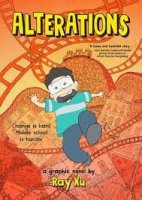“Scientists have shown that people all over the world must learn to like salty tastes, sour tastes, mixed tastes.But from the moment we are born, we crave sweetness.”In Sugar Changed the World, authors Aronson and Budhos—both, incidentally, descendants of workers in the sugar trade—make an enormously compelling argument for the case that human desire for sugar fuelled world-wide slave trafficking, enflamed the desire for empire, affected politics, and created the amazing cultural diversity of the modern age.
Before the Age of Sugar was the Age of Honey.Sweetness, before sugar cane and the process to convert it into crystallized sugar were discovered, came primarily from honey or sweet fruits.Rock drawings found in Spain, dating from about 7000 B.C. show “bee hunters” climbing cliffs to collect honey.Aronson describes lyrically how honey gave people a taste of their locales by virtue of the fact that bees collect pollen from local plants, grown from local soil.People ate locally from crops and honey around them.The cultivation of sugar changed that model of life.Around 8000 B.C., sugar cane was cultivated in New Guinea, and by 6000 B.C. it had reached the Philippines.
A major discovery in the use of sugar cane came from Hindu priests, who burned cane in religious ceremonies; they probably noticed that cane, when boiled and cooled, crystallizes into brown lumps that are sweet.People called it sharkara, which also meant gravel—sounds like sugar to me!The word for a piece of sugar in Sanskrit is khanda, from which we get “candy.”Sugar was also used by ancient Indians as medicine.
The next leap in the production of sugar from cane came from the oldest university in the world:Jundi Shapur in ancient Persia.Soon, Muslims spread this knowledge to lands they conquered. In fact, it was the Muslims who developed the plantation model—not so much a farm, with diverse crops and animals, but a farm devoted to one single crop.
We learn that Christopher Columbus traded in “white gold.”During the Crusades, Europeans acquired the sugar habit.After that….political maneuverings, the age of empire, and greed made sugar into gold, and the global demand for the substance enslaved everyone who touched it.The expertly written text concludes with the Emancipation movements that made clear to the world what the human price of sugar was—and still is, in some countries.The authors comment on the multicultural influences the slave/sugar relationship had on music and dance, from “Bomba in Puerto Rico, Maculelê in Brazil, [to] jazz in Louisiana.”Samples are included on the website:https://sugarchangedtheworld.com/.
This compendium is divided into four parts, and each ends with a cliff-hanger that urges the reader forward.Although the amount of information is formidable, the large font size and generous white space surrounding the text invite the reader into the story. This book is nothing short of genius; it demonstrates how the economics of the sugar trade touched the lives of millions of people over many centuries and ties together seemingly disparate events we all learn in our history books (including the American plantation and slavery period) into a human story of epic proportions.Although this book is most understandable to and useful for high school students, teachers should be aware of it, too.The wealth of primary source materials, annotated bibliography, timeline, and web links add to the experience.This is a truly remarkable book, and it deserves a place on all public library and high school library shelves. 176 pages
Recommended by Shari Shaw, Librrary Media Specialist.
- Non-Fiction
- Sugar Changed the World: A Story of Magic, Spice, Slavery, Freedom, and Science
Sugar Changed the World: A Story of Magic, Spice, Slavery, Freedom, and Science
HotPublished |
Updated
Book Information
Reading Level
Reader Personality Type
Author
Publisher
Clarion, 2010
Keywords
Country
Curriculum
- Science Curriculum
- Social Studies Curriculum
User reviews
Have you read this book? We'd love to hear what you think. Click the button below to write your own review!
Already have an account? Log in now or Create an account






